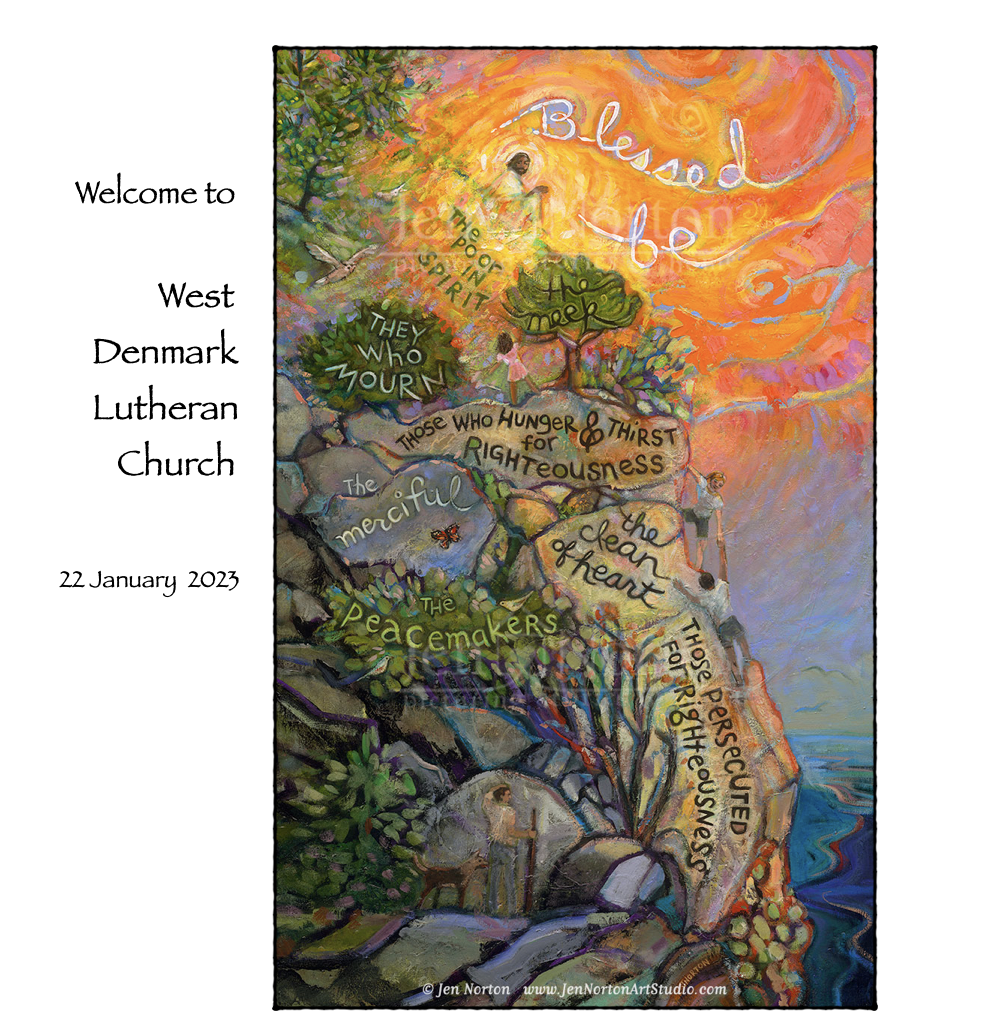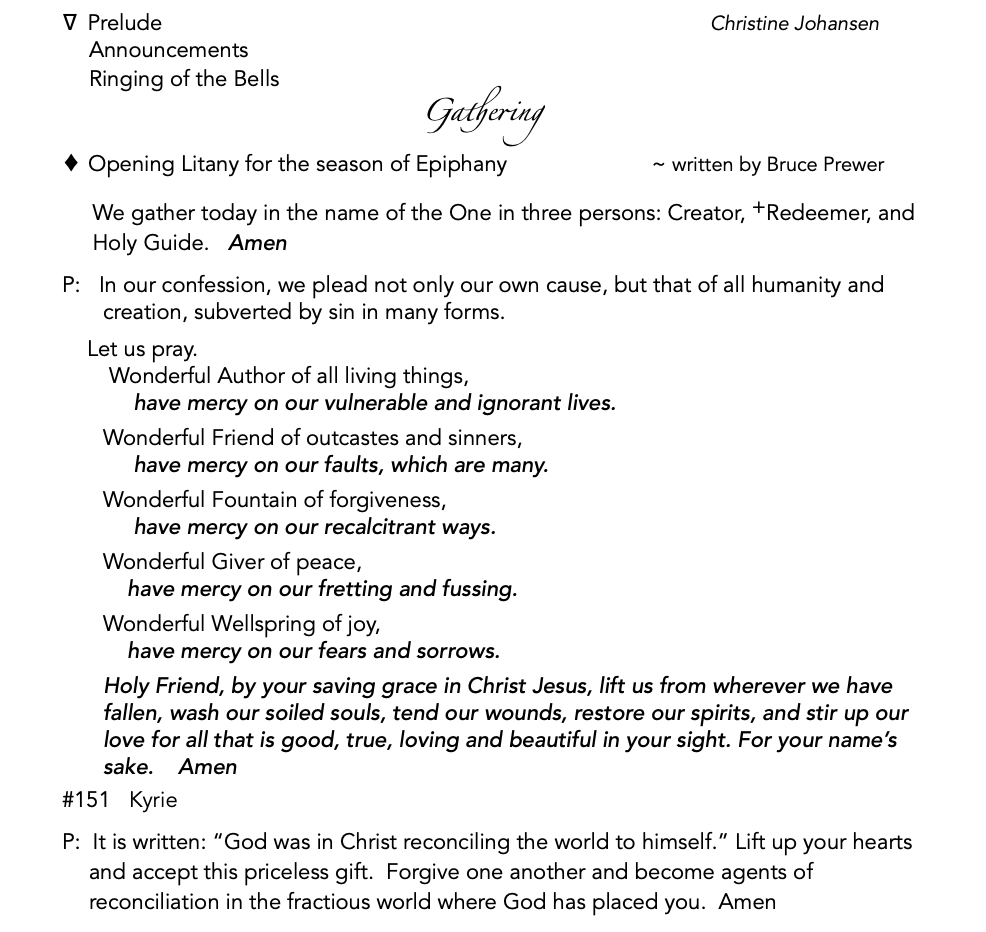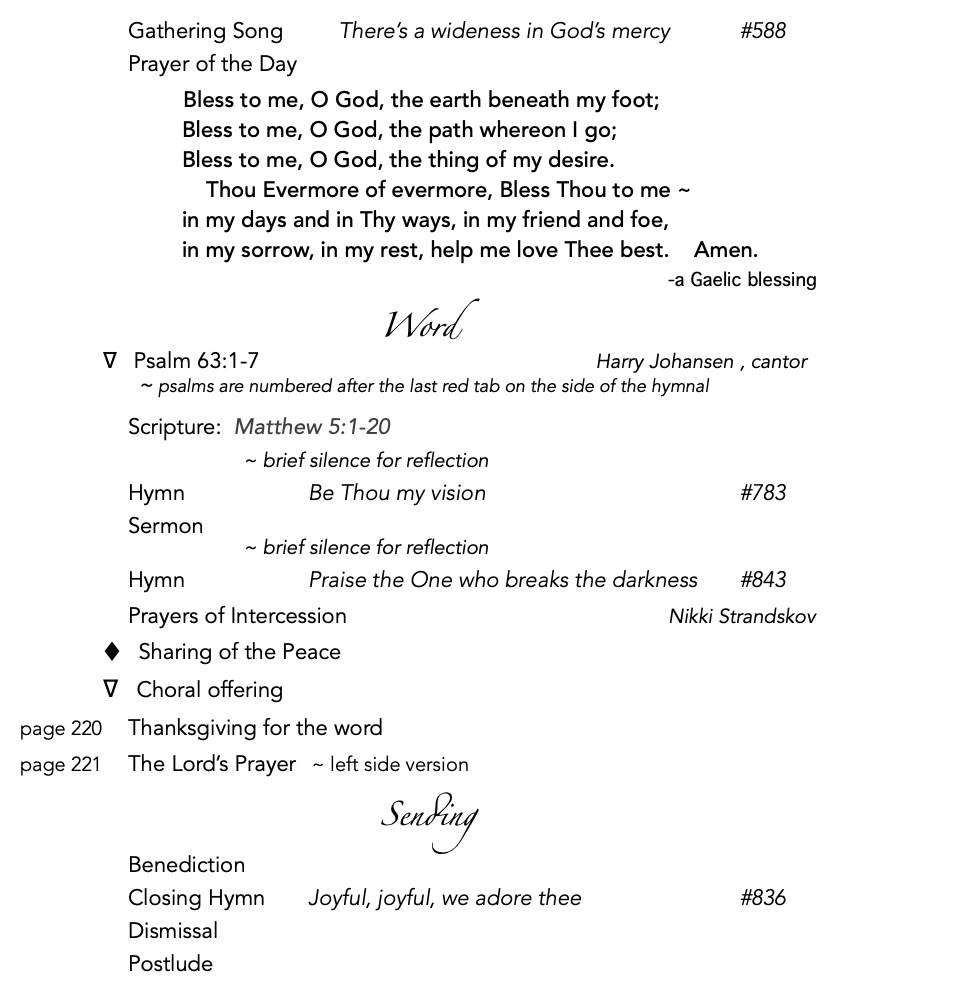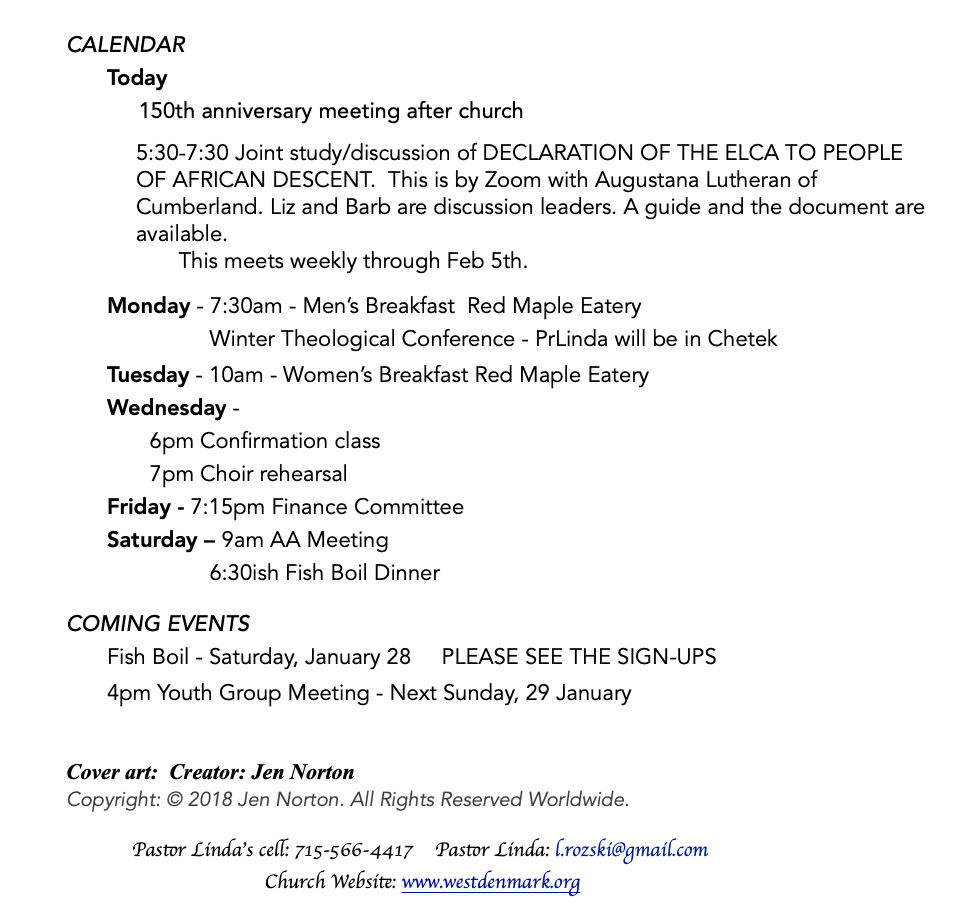Audio Recording



I don’t like the gospel of Matthew. I’ve said that before – maybe a lot? I apologize for the repetition. I find this gospel very challenging and unsettling. This section of antithesis (You have heard it said, but I tell you…) goes on for several more topics. We’ll hear more of them next week. Near the end, Jesus says: ‘Not everyone who says to me, “Lord, Lord”, will enter the kingdom of heaven, but only one who does the will of my Father in heaven. 22On that day many will say to me, “Lord, Lord, did we not prophesy in your name, and cast out demons in your name, and do many deeds of power in your name?” 23Then I will declare to them, “I never knew you; go away from me, you evildoers…. the gate is wide and the road is easy that leads to destruction, and there are many who take it. 14For the gate is narrow and the road is hard that leads to life, and there are few who find it.’
I don’t know what to do with many of the things Matthew’s Jesus says. They break sharply with the image of Jesus I carry as compassionate healer, empathetic see-er of the human condition, as the encompassing, inclusive embrace of a loving creator God. I know Jesus was edgy, but in Matthew, he is often harsh, judgmental, snarky, impossibly rigid.
So then, I ask myself if my comforting belief is grounded in scripture, or if I’ve done the Disney thing. And, as you also probably know, there’s no conclusive answer to that. It’s true, of course, that we all favor images and sections of scripture that fit most closely with our world view, our cultural ethos, our need. And that we do that no matter what the Good Book actually says.
And maybe — I may be well on my way to heresy at this point — maybe, it doesn’t matter. Maybe, all of the fuss is irrelevant because every image, every trajectory of faith, every attempt at knowing the nature of the divine being, is in some ways true and in some ways a false image, an idol of our mind’s making. I mean, I think that’s true. I read hours of commentaries and seminary text books every week and these experts all say something a bit different and sometimes contradictory to the last one I read. So I back up and just think…. which is what you usually get on Sunday morning, for good or ill. Mostly, I hope I cause you to think, too. We’re in this together.
But, back to the matter at hand and the beatitudes.
I’d like to do a sermon series on religious artwork, showing images created throughout the centuries on the topic of scripture. We have a preview today in the bulletin insert. I spend (perhaps waste) quite a bit of time each Saturday night finding an appropriate or pleasing image for the bulletin cover. As a result, I have seen what many artists have emphasized or brought to life for every sermon topic that we’ve covered for the past many years.
Look at your bulletin cover. It’s beautiful, colorful……. and very American 21st century. The words are there, but Jesus is in a cloud of color, the cliff is barely accessible, and the only people are obviously physically fit. That’s not to say they aren’t mourning; they may indeed be meek, merciful, pure of heart, and peacemakers, but this image, as beautiful as it is, doesn’t ring true to scripture.
“Jesus went throughout Galilee, teaching and proclaiming the good news of the kingdom and curing every disease and every sickness among the people. 24So his fame spread throughout all Syria, and they brought to him all the sick, those who were afflicted with various diseases and pains, demoniacs, epileptics, and paralytics, and he cured them. 25And great crowds followed him from Galilee, the Decapolis, Jerusalem, Judea, and from beyond the Jordan.
And when Jesus saw this crowd, he went up the mountain; and after he sat down and his disciples came to him, he began to teach them, saying: ‘Blessed are the poor in spirit, for theirs is the kingdom of heaven. Blessed those who mourn, blessed the meek, blessed those who hunger for a righteousness they can never attain, blessed the merciful, blessed the pure, blessed the peacemakers, blessed the persecuted. He’s looking at the crowd of people he’s just healed.
Butterflies and children scrambling up a cliff are, I hope blessed, but not quite what Jesus is saying. The painting by Jan Brueghel the Elder (top right on the insert) is similarly lovely. It’s too small for you to see properly, but Jesus is in the center of the people in a pale yellow, knee length tunic. No hat, long hair looking kind of a mess, actually. A white aura encircles the crowd near him. Everyone else is dressed in 16th century Flemish finery. I’d like to learn more about the various groupings, but without knowing more, what I see is that the artist brought Jesus into his own context, his own people and time. High class people.
Whether it is proper theologically or not, this is what we do, what we need to do to have Jesus speak to us. And so it is with each of the paintings I’ve selected. They speak from a specific context, they bring Jesus into the midst of their community. The Van Gogh was paired with the poem and it felt right even though it’s not intended to be about the sermon on the mount. You might want to take the insert home and look the images up on your computer to study them, and no doubt you’ll find dozens of others. I do with words what artists do with paint and brushes. With one big difference. I can quickly change images and focus and emphasis week by week, trying things on to see how they fit – artists are committed to an interpretation, a visual description of who/how they see Christ working in the world – they are putting it all out there.
And actually, this is exactly what Matthew did. He brought the stories and traditions he knew of Jesus into the needs and issues of his community – without giving a thought to us! The author of Matthew – probably in Antioch, Syria, probably around the year 85 CE, probably of the sect of Christian Jews, was trying to help his community find a path forward after the Temple in Jerusalem was destroyed. As a Jew, he believed in Hebrew scripture absolutely. But he believed that Jesus was the fulfillment of Torah, and that set him at odds with the Pharisees. Matthew spends the first seven chapters presenting Jesus as the fulfillment of scripture and righteousness – which Jesus says – “I have not come to abolish the law but to fulfill it.” That’s why we’re hearing so much law in this gospel when we expect to hear grace. Matthew’s community members were observant Jews contemplating this completely new thing, interpreting Jesus in light of scripture. The opening chapters of Matthew are a retelling of the themes from Exodus. Like Joseph of long ago, Jesus’ Joseph interpreted dreams and escaped with Mary and Jesus to Egypt. Like the Israelites, Jesus was led out of Egypt, crossed through the water, was claimed by God, and was tested in the wilderness – for 40 days, not 40 years. Unlike Israel, Jesus proved his faithfulness to God. Now, on a mountain, like Moses, he proves his adherence to the Law reinterpreting the commandments, exceeding their righteousness. Matthew is carefully building the structure of the story so that his people may take this image bridge to the astounding news that Jesus is the long awaited Messiah.
Jesus may or may not have said the words we read quoted in Matthew. It was written 50 years after his death. But that doesn’t matter – in that Matthew is incarnating, fleshing out the various stories and documents he had available to him about Jesus in order to move the hearts and minds of his community to believe that scripture was being fulfilled in their lifetime.
It’s an extraordinary leap. It is an extraordinary, inspired gift that the apostle Paul and Matthew and the other gospel writers were given to be able to see God in Jesus and make the connections that made sense within their own setting. It is even more incredible that throughout history and across completely divergent cultures, as shown in the few art works in the bulletin, that we are able to recognize and assimilate the gospel story finding ourselves and our times reflected there.
The reality of people’s lives that Jesus saw that day moved him. And he saw that whatever the world might say of them, whatever they might say of themselves — poor in spirit, meek, hungry, mourning, merciful — they were, at the same time, children of God whose grace drew near and named them blessed. That, too, is something we may appropriate from these old writings for ourselves and our time. Blessed are you.
